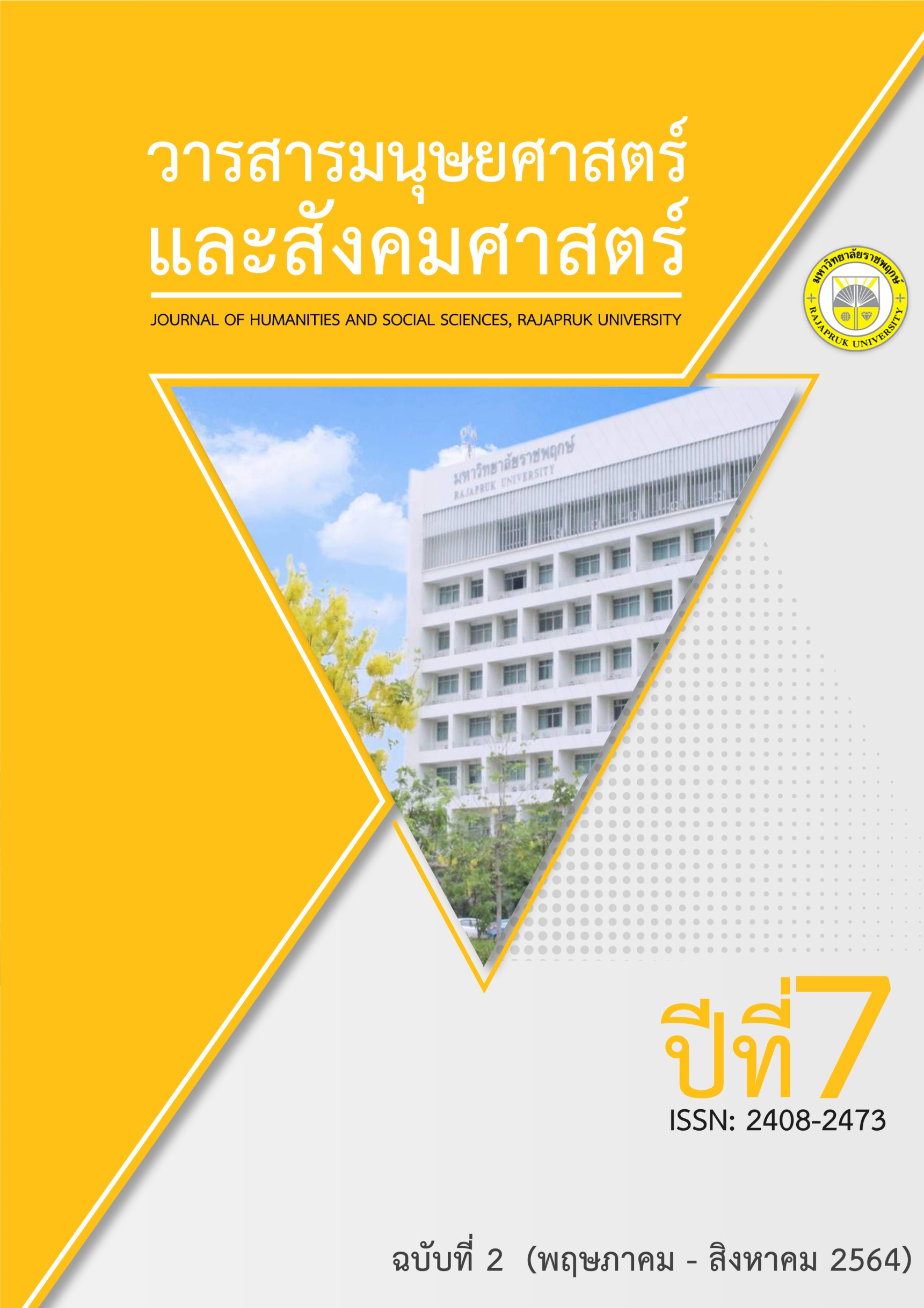Conditions and Guidelines for Athlete Development through Sports Science Principles for the Excellence of the Sports Office in the National Sports University (Northern Campus)
Main Article Content
Abstract
The purposes of this research were to study the conditions and guidelines for athlete development through sports science principles for excellence of the sports office in the National Sports University (Northern Campus). The research was divided into 2 phases, the phase of conditions of sports development (phase 1) and the phase of guidelines of sports development (phase 2). First, target group was 132 persons and selected by purposive selected. The instrument used for data collecting was questionnaire which had IOC range from 0.60-0.90 and Alpha coefficient reliability value of 0.97. The quantitative method of statistical analysis was analyzed by using frequency, percentage, mean, and standard deviation. Second, target group was 14 persons who involved in sports development selected by purposive selected. The descriptive data was collected by using semi-structured interview and then used content analysis.
The results showed that working conditions with PDCA quality cycle were at a high level in all issues of sports science such as body conditioning, sports medicine, sports psychology, sports nutrition, and sports technology. Additionally, the guidelines of sports development in accordance with principles of sports science can be effectively applied and attained the development in sports excellence relevant to issues of sports science.
Article Details
References
การกีฬาแห่งประเทศไทย. (2560). แผนยุทธศาสตร์สร้างกีฬาไทยสู่ความเป็นเลิศ. (พ.ศ.2560-2564). กรุงเทพฯ: กระทรวงการท่องเที่ยวและกีฬา.
จักรพงษ์ ชุบไธสง. (2552). การศึกษาสภาพและปัญหาการดำเนินงานด้านกีฬาของเทศบาลในประเทศไทย. วิทยานิพนธ์วิทยาศาสตรมหาบัณฑิต สาขาวิชาวิทยาศาสตร์การกีฬา คณะวิทยาศาสตร์การกีฬา จุฬาลงกรณ์มหาวิทยาลัย.
เจริญ กระบวนรัตน์. (2559). หลักการพิจารณาความหนักที่เหมาะสมในการฝึก. วารสารคณะพลศึกษา, 19(2) กรกฎาคม-ธันวาคม 2559.
พรสรรค์ สระภักดิ์. (2556). ระบบการจัดการฝึกซ้อมของนักกีฬาวอลเลย์บอลในศูนย์กีฬาเพื่อความเป็นเลิศของสถาบันการพลศึกษา วิทยาเขตชลบุรี. กองส่งเสริมวิชาการ ฝ่ายโรงเรียน: สถาบันการพลศึกษา.
พฤกษศาสตร์ ลาพุทธา. (2557). แนวทางการพัฒนาการบริหารจัดการกีฬาจักรยานเพื่อความเป็นเลิศของสมาคมกีฬาจังหวัดศรีสะเกษ. วิทยานิพนธ์วิทยาศาสตรมหาบัณฑิต สาขาวิชาวิทยาศาสตร์การออกกาลังกายและการกีฬา คณะวิทยาศาสตร์การกีฬา มหาวิทยาลัยบูรพา.
พิชายุต วงศ์สุกฤต. (2560). ประโยชน์ของกระบวนการทำงานด้วยระบบ PDCA. กรุงเทพฯ: จุฬาลงกรณ์มหาวิทยาลัย.
ยุทธศาสตร์สถาบันการพลศึกษา มหาวิทยาลัยการกีฬาแห่งชาติ. (2561). ประเด็นยุทธศาสตร์ เป้าประสงค์ ตัวชี้วัด และกลยุทธ์. กรุงเทพฯ: มหาวิทยาลัยการกีฬาแห่งชาติ.
ไวพจน์ จันทร์เสม .(2558). วิทยาศาสตร์การกีฬากับการพัฒนาการกีฬา. วารสารวิชาการสถาบันการพลศึกษา, 7(1) มกราคม–เมษายน 2558: 235-239.
สุทัศน์ ยกส้าน. (2560). บทบาทของวิทยาศาสตร์ในการเพิ่มความสามารถของนักกีฬา. ค้นเมื่อวันที่ 20 พฤษภาคม 2562, จาก https://mgronline.com/science/detail.
อภิวัฒน์ ปานทอง และคณะ. (2560). การวางแผนระยะยาวสำหรับพัฒนานักกีฬา. วารสารบัณฑิตศึกษา, 14(64) มกราคม–มีนาคม 2560: 15-22.
อัษ แสนภักดี. (2558). รูปแบบของปัจจัยด้านการบริหารที่ส่งผลต่อประสิทธิผลของกีฬาเพื่อความเป็นเลิศในสถาบันอุดมศึกษาของรัฐ. วิทยานิพนธ์ปริญญา ปรัชญาดุษฎีบัณฑิต สาขาวิชาวิทยาศาสตร์การออกกำลังการและการกีฬา บัณฑิตวิทยาลัย มหาวิทยาลัยบูรพา.
อาพัทธ์ เตียวตระกูล. (2555). รูปแบบการจัดการนิสิตนักศึกษาที่มีความสามารถพิเศษทางกีฬาในสถาบันอุดมศึกษาของรัฐ. วารสารวิชาการมหาวิทยาลัยศิลปกร กลุ่มมนุษยศาสตร์และสังคมศาสตร์: 381-398.
อำพร ศรียาภัย สุพิตร สมาหิโต และ พงษ์ศักดิ์ สวัสดิเกียรติ. (2557). การจัดการกีฬาในสถาบันการศึกษาระดับอุดมศึกษาเพื่อการพัฒนากีฬาชาติ. วารสารสมาคม การจัดการกีฬาแห่งประเทศไทย, 4(1): 35-50.
Arian, M., Mortazavi, H., TabatabaiChehr, M., Navipour, H., & Vanaki, Z. (2016). Institutionalizing the educational role of nurses by Deming cycle (PDCA). Quarterly Journal of Nursing Management, 4(4): 45-57.
Balyi, I. Way, R., & Higgs, C. (2013).Long-Term Athlete Development. Champaign, Illinois: Human Kinetics.
Casals, M., & Finch, C. F. (2017). Sports Biostatistician: a critical member of all sports science and medicine teams for injury prevention. Injury prevention, 23(6), 423-427.
Cheng, C. C. (1993). Generating feasible schedules under complex metric constraints. resource, 7(R2): 3-91.
Goff, B. (2000). Effects of University athletics on the University; Review and Extension of empirical assessment. Journal of Sport Management, 14(2): 85-104.
Guidotti, T. (2018). 1144 Continuous quality improvement (cqi) as an alternative to standard setting. the Deming cycle (pdca) approach to achieving risk reduction.
Perrey, S., & Ferrari, M. (2018). Muscle oximetry in sports science: a systematic review. Sports Medicine, 48(3): 597-616.
Silva, A. S., Medeiros, C. F., & Vieira, R. K. (2017). Cleaner Production and PDCA cycle: Practical application for reducing the Cans Loss Index in a beverage company. Journal of cleaner production, 150: 324-338.


